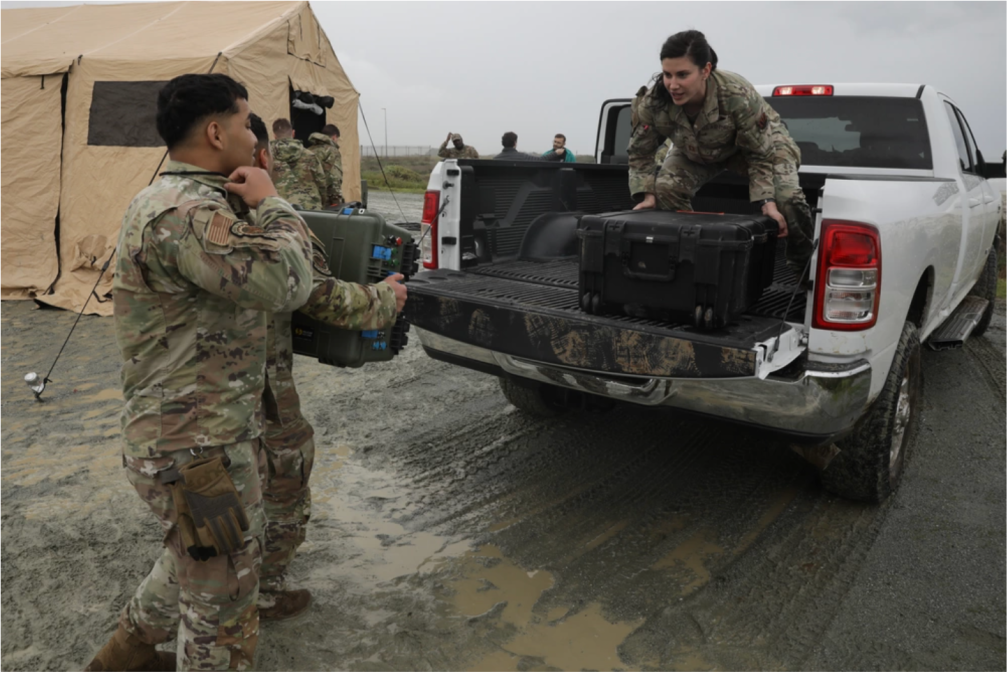What’s next for the new CJADC2 minimum viable capability

The Pentagon’s Chief Digital and Artificial Intelligence Office is poised to put its new and highly anticipated minimum viable capability for Combined Joint All-Domain Command and Control (CJADC2) to work at the Army’s latest Project Convergence experiments kicking off this week.
“It’s this agile process that we’re trying really hard to bring to the [Defense Department], which is: how do I get something in front of the warfighter quickly, but do it in such a way that we can sustain it and make it grow and make it change as it needs to be changed,” CDAO’s chief Craig Martell told reporters Thursday.
Broadly, CJADC2 refers to the Pentagon’s evolving construct to achieve next-generation command and control — and ultimately connect and coordinate all military personnel and assets across all warfighting domains via one network to ensure competitive advantages in future conflicts.
Citing wide-ranging security precautions, senior officials have been pretty discreet about how all the intricate elements needed for CJADC2 are coming to fruition across the services. However, each of the department’s major components has its own responsibilities to enable it, including the CDAO.
In particular, Deputy Defense Secretary Kathleen Hicks tasked the data and AI office in 2022 with relaunching and reinvigorating the Global Information Dominance Experiment (GIDE) series as a means to help enable the full realization of the complex concept. In the summer of 2023, Hicks further directed the CDAO to deliver a minimum viable capability for CJADC2 through GIDE by the end of that year.
“The minimum viable capability for CJADC2 is real and ready now. It’s low latency and extremely reliable,” Hicks announced during her keynote Wednesday at the CDAO’s Advantage Defense and Data Symposium.
“For security reasons, I can’t say where or what that capability is for, but I can tell you it was no easy task — especially in six months. But with a lot of hard work across many teams — pairing operators across multiple commands with engineers from DOD and industry — they delivered, on time and on target, combining software applications, live data integration, real-world networks, new cross-domain operational concepts, and warfighters around the world to provide even better decision advantage for DOD and our military commanders,” Hicks said.
On the final day of last week’s summit, senior CDAO officials hosted a media briefing during which they shed more light on features of this new minimum viable capability and how they plan to advance it in the near term.
“Our job is to make the data flow to the right people at the right time so that particular commanders can build the tools that they need,” Martell said.
“My goal is to have this ‘data mesh’ in place — with the right data, at the right place, for the right person. How do I drive that forward? Since I work in the Pentagon, I find the right use cases that are going to bring the most value as quickly as possible. The MVC is the set of use cases that we tackled first. It’s not all of them by a longshot,” he explained.
Martell and his colleagues participating in the media briefing declined to discuss specific applications of the new capability or point to locations or regions where it may currently be in use.
“We really focused for this first year on global integration and the ability of the U.S. combatant commands and the joint staff to be able to see globally and act globally to create those deterrent effects — and that capability is what we really delivered via this new minimum viable capability,” said Col. Matthew Strohmeyer, the CDAO’s GIDE mission commander.
“I think it’s clear, even in the last couple weeks, that we live in an increasingly complex strategic environment — whether it’s the actions that we see in [Indo-Pacific Command], whether it’s actions that we see in the cyber domain, whether it’s actions that we see and rumors and things happening in the space domain — we need to be able to understand what’s going on across all domains. At the same time, we need to be able to understand what’s going on by our potential competitors or adversaries, not just regionally, but globally,” Strohmeyer noted.
Notably, he acknowledged that — because the federal government is currently operating under a continuing resolution — his team is “not able to deliver [the MVC] at the level of the scope and scale” that they’d like, at the moment.
“But it is being used right now with U.S. combatant commands and the Joint Staff in current real-world operations,” Strohmeyer told DefenseScoop during the briefing.
The iterative, to-be-improved-upon capability will also be unleashed at the tactical level with a military service for the Army’s Project Convergence Capstone 4 ‘in-the-dirt’ experiments, which are unfolding Feb. 23-March 20.
“That’s a key partnership that GIDE is going to have, where we’re really hoping to learn — at the joint level — what the services need and what data can be provided, so that as we continue to bring together combined joint all-domain command and control, that ‘joint’ aspect is even better informed by both service requirements and service data that they’ve got,” Strohmeyer said.
“[This] should show that the department is making a paradigm shift into changes at scale and at speed that is rivaling any potential competitor that we could have,” he added.



